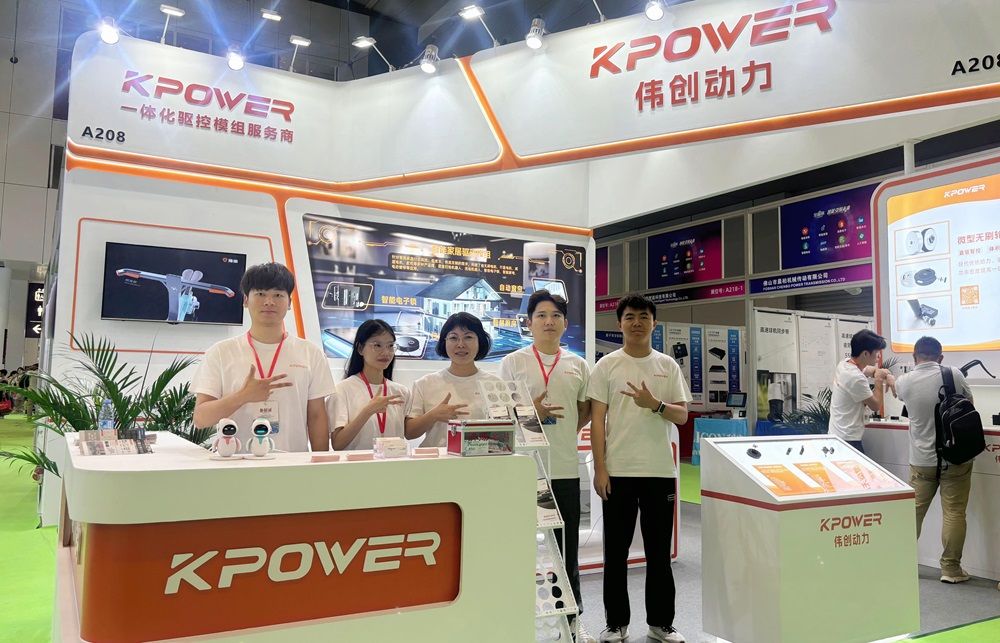Unlocking the Potential: How to Control a Servo Motor with a Joystick
Imagine a world where robots, drones, and remote-controlled vehicles respond seamlessly to your commands, mimicking human dexterity and intuition. At the heart of this precision control lies a simple yet powerful principle: effectively controlling servo motors with a joystick. Whether you're building a robotic arm, a remote-controlled car, or an interactive art installation, mastering this technique opens a universe of possibilities.

But what exactly is a servo motor, and why use a joystick? Let's start there.
What Is a Servo Motor? A servo motor is a compact, high-torque device designed to precisely control angular position, velocity, and acceleration. Unlike regular motors that run continuously, servos are equipped with a control circuit and a feedback mechanism. This allows them to rotate to a specific angle, making them ideal for applications like robotic arms, camera gimbals, or steering mechanisms.
Why Use a Joystick? A joystick provides an intuitive, manual control interface. Its variable resistors (potentiometers) allow for directional and proportional input—think of it as a digital "flesh-and-blood" extension of your hand, translating subtle movements into commands that a microcontroller can interpret.
Essential Components You Need To control a servo motor with a joystick, you'll need the following:
A Microcontroller: Arduino Uno is a popular beginner-friendly choice. Servo Motor: Standard hobby servo (like SG90 or MG996R). Joystick Module: Usually a small module with X and Y axes. Power Supply: Appropriate for your servo and microcontroller. Connecting Wires and Breadboard: For prototyping. Optional: Additional components like resistors or filters for noise reduction.
Setting Up the Hardware
1. Connecting the Joystick Most joystick modules have three pins: VCC, GND, and Signal.
Connect VCC to 5V on Arduino. Connect GND to ground. Connect the X-axis signal pin to an analog input pin (like A0). Connect the Y-axis signal pin to another analog input (like A1), if you want two-dimensional control.
2. Connecting the Servo Servos typically have three wires: power (red), ground (black or brown), and control (white or yellow).
Connect the power wire to the 5V supply. Connect ground to GND. Connect control to a PWM-capable digital pin (like D9).
3. Power Considerations Ensure your power supply can handle the servo's current demands, especially if you're controlling multiple servos or a larger model. It’s often better to power the servo directly from an external power source rather than drawing all from the Arduino’s 5V pin.
Programming the Microcontroller
Once your hardware is wired correctly, it's time to code the control logic.
1. Including Libraries Arduino's built-in Servo library makes controlling servo motors straightforward. Include it at the top of your sketch:
#include
2. Declaring Objects and Variables Define your servo object and variables for the joystick readings:
Servo myServo; int joystickXPin = A0; int joystickYPin = A1; // Optional if using two axes int servoPin = 9; int joystickXValue; int servoPosition;
3. Reading Joystick Inputs and Mapping Them Joystick analog readings range from 0 to 1023. To make control more intuitive, these inputs should be mapped to a servo position range, usually 0-180 degrees:
void setup() { myServo.attach(servoPin); Serial.begin(9600); } void loop() { joystickXValue = analogRead(joystickXPin); // Map the joystick value servoPosition = map(joystickXValue, 0, 1023, 0, 180); myServo.write(servoPosition); Serial.print("Joystick X: "); Serial.print(joystickXValue); Serial.print(" -> Servo: "); Serial.println(servoPosition); delay(15); }
Fine-Tuning and Calibration
The raw readings might not always feel natural. Here are some tips to improve responsiveness:
Centered Calibration: Determine the joystick's center point and adjust the mapping accordingly. Dead Zones: Implement thresholds to ignore minor fluctuations around the center position, preventing jitter. Smoothing: Use averaging or low-pass filters to make movements smoother.
Example of a dead zone implementation:
int deadZone = 50; // Adjust as needed void loop() { joystickXValue = analogRead(joystickXPin); if (abs(joystickXValue - 512) > deadZone) { int mappedValue = map(joystickXValue, 0, 1023, 0, 180); myServo.write(mappedValue); } delay(15); }
This prevents small unintentional movements from affecting your servo, giving you more control.
Troubleshooting Common Problems
Servo jittering: Could be caused by noisy analog signals or insufficient power. Adding a capacitor across the servo's power lines can help. No response: Double-check your wiring, ensure your code matches your hardware, and verify the servo's range. Overheating servo: Avoid simultaneously moving multiple servos under heavy loads.
This first part provides a comprehensive foundation on hardware setup, coding, and troubleshooting. In the next part, we'll dive deeper into advanced control interfaces, incorporating feedback for enhanced precision, and practical project ideas to bring your joystick-controlled servo to life.
Leveraging innovations in modular drive technology, Kpower integrates high-performance motors, precision reducers, and multi-protocol control systems to provide efficient and customized smart drive system solutions.




































